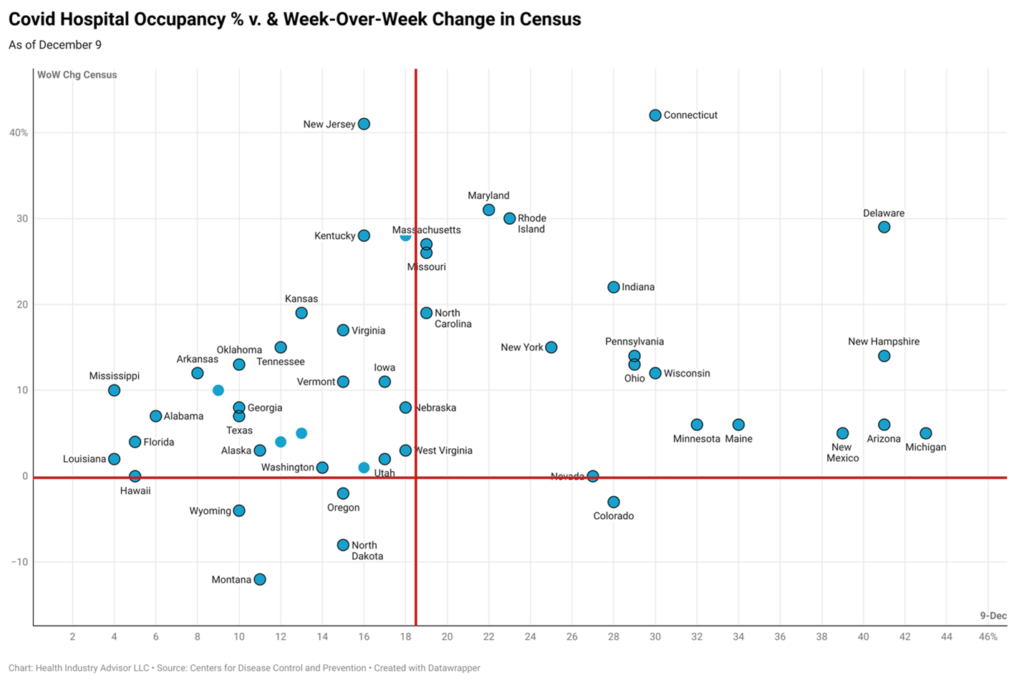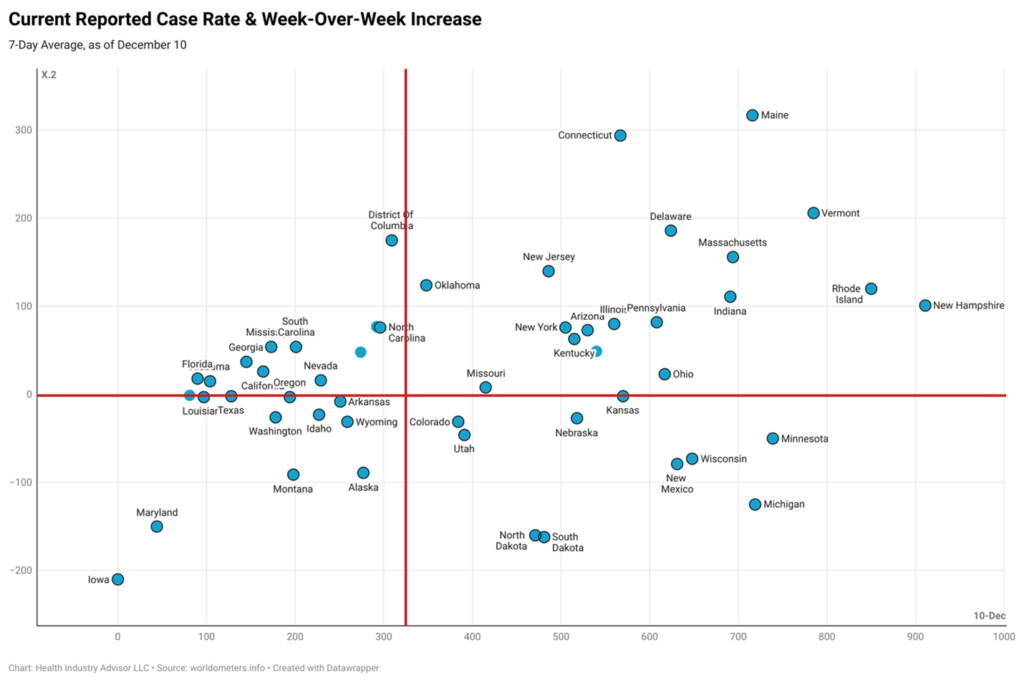December 13, 2021 –
“You unlock this door with the key of imagination. Beyond it is another dimension: a dimension of sound, a dimension of sight, a dimension of mind. You’re moving into a land of both shadow and substance, of things and ideas. You’ve just crossed over into… the Twilight Zone.” – Rod Serling, The Twilight Zone
For those of us old enough to remember, the popular CBS science fiction thriller, The Twilight Zone, aired from 1959 to 1964. Rod Serling, the show’s creator, opened each of the 156 episodes with a variation of the chilling quote cited above. The quote grew the suspense for the show’s unexpected twists and turns.
Anxiety and uncertainty grew as each episode unfolded. Still, we were glued to the television. Despite its ominous opening, the story arc always brought the situation to a satisfactory resolution.
Omicron’s emergence elicits similar emotions.
It remains too early to draw specific conclusions about Omicron and its impact. Nonetheless, expert observers infer several hypotheses from the early returns (credit to Eric Topol, MD, (@EricTopol) for an excellent summary posted to his social media account over the weekend):
- Omicron cases double every 2-3 days; it demonstrates a three-fold higher transmission rate than Delta
- The Pfizer vaccine, with a booster, may be 75% effective against illness; effectiveness drops to 35% with only two doses
- Prior infection plus vaccination provides strong protection; however, Omicron produces more reinfections and breakthrough cases than Delta
- Cases tend to be milder, on average, than with prior variants – resulting in lower hospitalization rates; however, the anticipated high case volume likely means spiking hospital admissions.
One theory, articulated by Trevor Bedford on today’s In the Bubble podcast with Andy Slavitt: we might anticipate significant infections but low illness rates in the near term (Bedford predicts January-February). Bedford attributes this to Omicron’s ability to break through the immunity resistance without eliminating immune resistance to severe infections.
Notably, Bedford does not anticipate that Omicron will overwhelm the healthcare system.
In a sense, we could experience a growing divergence between infection and illness. Bedford envisions an endgame in which the virus annually infects 20% of the population – a rate comparable to the flu – with illnesses limited by vaccinations and natural immunity from prior infections.

With this backdrop, we increase our primary attention to hospitalization rates and fatalities as proxies for illness and severity and secondarily to cases as a proxy for infections. (It is a proxy measure to the extent that not all infections are detected; if infections trend milder, we should anticipate an increasingly higher proportion of undetected to detected cases.)
As of Friday, Covid patients occupied one of every 5.5 hospital beds in the United States. This rate spiked from the one in eight beds occupied by Covid patients just four weeks ago. Nonetheless, it is far better than the two-in-five rate posted last January.

Hospitals and particularly doctors and nurses in at least five states strain mightily with Covid cases: Arizona, Colorado, Delaware, Michigan, and New Hampshire devote at least two of every five beds to treating Covid patients. Four additional states – Connecticut, Maine, Minnesota, and New Mexico – use one of every three beds for these patients.
Only seven states reported fewer Covid patients last week than a week earlier – Colorado, Hawaii, Montana, Nevada, North Dakota, Oregon, and Wyoming. Hospitals in every other state cared for more patients than the prior week, with Connecticut, Maryland, New Jersey, and Rhode Island posting the most significant increases on a percentage basis.
Tragically, more than 1,200 American lives were lost to Covid19 each day last week. This rate has risen since early November, as expected, given the rising number of new cases during this time. Experts project further increases in the next few weeks, with deaths reaching about 1,300 daily by the end of the year (Covid19 Forecast Hub.)
Reported Covid cases increased last week, albeit more slowly than in our recent experience. Further, cases rates appeared to decline toward the end of last week. Nevertheless, case counts are higher than any time since late October. Since Thanksgiving, estimated daily infections have been consistently higher than any day since mid-September.
Maine, Minnesota, Michigan, Rhode Island, and Vermont reported the highest case rates per capita last week. Other states with high rates included Delaware, Indiana, Massachusetts, New Mexico, Ohio, Pennsylvania, and Wisconsin.
Cases per capita rose most sharply week-over-week in Connecticut, Delaware, Maine, and Vermont.

According to the latest ensemble forecast, despite recent trends and Omicron’s emergence, cases are predicted to decline next week and again the following week. The Institute for Health Metrics and Evaluation (IHME) suspended its popular forecast temporarily, as it re-builds the model to capture Omicron’s impact.
Contributing writer:
Mark A. Van Sumeren, strategic advisor, Medical Devices & Integrated Delivery Networks
Health Industry Advisor LLC, provides a regular report on COVID-19 numbers for the health care industry.
For more information, or to sign up for the report, contact Mark at Mark.VanSumeren@HealthIndustryAdvisor.com; or visit www.HealthIndustryAdvisor.com.
